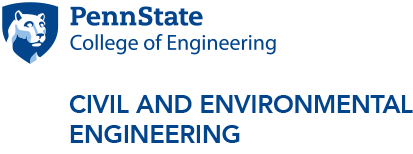Challenges associated with Structural Health Monitoring of Bridge Systems – I35W St. Anthony Falls Bridge
Abstract: During evening rush hour traffic on August 1, 2007, the major interstate highway bridge carrying I35W over the Mississippi River in Minneapolis catastrophically failed, tragically taking the lives of thirteen people, and injuring many more. This tragedy generated great interest in employment of structural health monitoring systems. The I35W St. Anthony Falls Bridge, a post-tensioned concrete box bridge constructed to replace the collapsed steel truss bridge, contains over 500 instruments to monitor the structural behavior. Long-term monitoring of such structures is complicated by the fact that their behavior is strongly dependent on natural, non-damage related changes due to temperature and time-dependent effects. The monitoring system installed within the I-35W St. Anthony Falls Bridge provides a case study for investigating how these behaviors might manifest in sensor data collected over a number of years. This talk focuses on a discussion of the instrumentation installed in the I-35W Bridge, and specifically how temperature and time-dependent behaviors affect the structural response measured by these instruments. The results of the research were used to develop a prototype monitoring system associated with bearing movements using data from linear potentiometers located near the expansion joints on the bridge. An anomaly detection routine developed for the linear potentiometer data was successfully used to identify short-term and long-term anomalies in the data.
Bio: Catherine Wolfgram French, PE, HonMACI, FPCI, Dist.MASCE is College of Science and Engineering Distinguished Professor at the University of Minnesota, where she has been a member of the faculty since 1984. Her research addresses the behavior of reinforced and prestressed concrete structural systems, field monitoring of structures, numerical and experimental investigations of structural systems including time-dependent and environmental effects, evaluation and repair of damaged structures, and development and application of new materials. She is a recipient of a number of awards including the American Concrete Institute (ACI) Joe Kelly Award, ACI Henry L. Kennedy Award, ACI Reinforced Concrete Research Council Arthur J. Boase Award, and American Society of Civil Engineers (ASCE) Distinguished Member and Raymond C. Reese Research Prize. She is a past member of ACI Board of Directors, and numerous other ACI committees. She currently serves on the ACI 318, Structural Concrete Building Code Committee, for which she has been a member since 1995
Additional Information:
For Zoom link and password, please contact Lisa Spicer at lms8@psu.edu
Media Contact: Lisa Spicer



